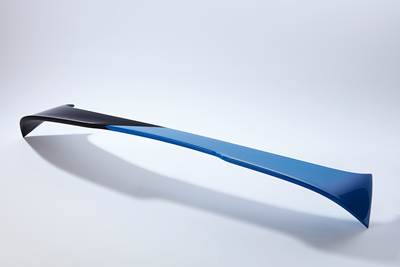The ‘Natural’ History of Plastics is … well, ‘Circular’
‘Renewable’ and ‘biobased’ are the keywords to many developments in plastics today — which takes us back to the very origin of the plastics industry. How’s that for ‘circularity’? (another keyword today)

Today’s Renewable Revolution in biobased polymers points backward to the first major commercial plastic — Celluloid, cellulose nitrate derived from cotton or wood pulp, and used for photographic film stock, shirt cuffs and collars, and pool balls, among others. (Photo: Getty Images/Serg_Velusceac)
This blog post started with my refrigerator. I took out a carton of milk for my morning tea and my wife’s breakfast cereal, and it smelled … off. The only milk I had on hand had gone sour.
Not the best way to start the day. But it did get me thinking about lactic acid (the sour taste in spoiled milk) and polylactic acid (PLA) the leading biopolymer today. While I was explaining this fascinating connection to my wife, who may have been less fascinated, I thought, Wait a minute … milk was used for plastics a long, long time before PLA was invented.
And then it dawned on me: Chemical companies today are in a rush to convert their plastic products to biobased “renewable” feedstocks—but that’s exactly what the first plastics were made from. Celluloid, the first commercially successful synthetic plastic (setting aside natural rubber and gutta percha) was made from cotton or wood pulp and commercialized in 1872. And plastic resins based on casein — milk protein — date back to 1897. The latter were used mainly in buttons.
You won’t see any casein-based buttons nowadays, except in a museum or collection of antiques, but cellulose acetate plastics made from wood pulp are still commonly used in eyeglass frames, films appliances, housewares, medical devices, cosmetics and a miscellany of other products.
In the intervening century and a half, the chemical industry fell in love with derivatives of coal, oil and natural gas. But at least one humble biobased feedstock found a home in plastics, unheralded until recently. For almost 60 years, castor oil has been the basis of long-chain nylons such as 610, 11, 1010, 1012 and 410.
In this millennium, the hunt for bio-feedstocks hit high gear, exploiting everything from sugar cane to agricultural waste products, used vegetable oils and tall oil from wood. The results include development of bio-derived ethylene, styrene and butadiene monomers and fully or partially biobased nylon 66 and 46, actetal (POM), polycarbonate, polyetherimide, PET, PBT, PEF, polyethylene, EVA, polypropylene, polystyrene, ABS, SAN, ASA and several other styrenics, thermoplastic starch polymers, and TP elastomers of various types. In the works are bio-derived MMA (the basis of PMMA acrylics) and acrylonitrile. There has even been talk of making PVC from bio-ethylene. According to one market-research firm, the number of suppliers of biobased PE and PP will soon hit double digits.
And biopolymers made wholly or in part by microbial fermentation have mushroomed beyond PLA to a variety of PHAs, PHBs, PBS, PTT and PHBH. One optimistic market report forecasts cumulative average growth of more than 10%/yr for such plastics over the next decade.
You can get a taste of the current action from our previews of new materials at October’s K 2022 show in Düsseldorf, where renewable and recycled (“circular”) plastics will vie for attention. See this month’s Close-Up and next month’s longer feature, both by Senior Editor Lilli Sherman.
You might say we’re in a Renewable Revolution. But you can’t spell revolution without “re,” which signifies “again.” And that’s my point.
Related Content
Prices Up for PE, ABS, PC, Nylons 6 and 66; Down for PP, PET and Flat for PS and PVC
Second quarter started with price hikes in PE and the four volume engineering resins, but relatively stable pricing was largely expected by the quarter’s end.
Read MoreHow to Optimize Injection Molding of PHA and PHA/PLA Blends
Here are processing guidelines aimed at both getting the PHA resin into the process without degrading it, and reducing residence time at melt temperatures.
Read MorePart 3: The World of Molding Thermosets
Thermosets were the prevalent material in the early history of plastics, but were soon overtaken by thermoplastics in injection molding applications.
Read MorePrices for All Volume Resins Head Down at End of 2023
Flat-to-downward trajectory for at least this month.
Read MoreRead Next
Engineering Thermoplastics Are Going ‘Green’
As high-performance materials follow the path taken by some commodity resins, farming could replace drilling as suppliers rely more on plants than oil or gas for feedstocks.
Read MoreK 2022 Preview: Engineering Materials for Sustainability and E-Mobility
Materials that are sustainable yet offer equal performance to their fossil-based counterparts will be prominent at K 2022.
Read MorePeople 4.0 – How to Get Buy-In from Your Staff for Industry 4.0 Systems
Implementing a production monitoring system as the foundation of a ‘smart factory’ is about integrating people with new technology as much as it is about integrating machines and computers. Here are tips from a company that has gone through the process.
Read More


























